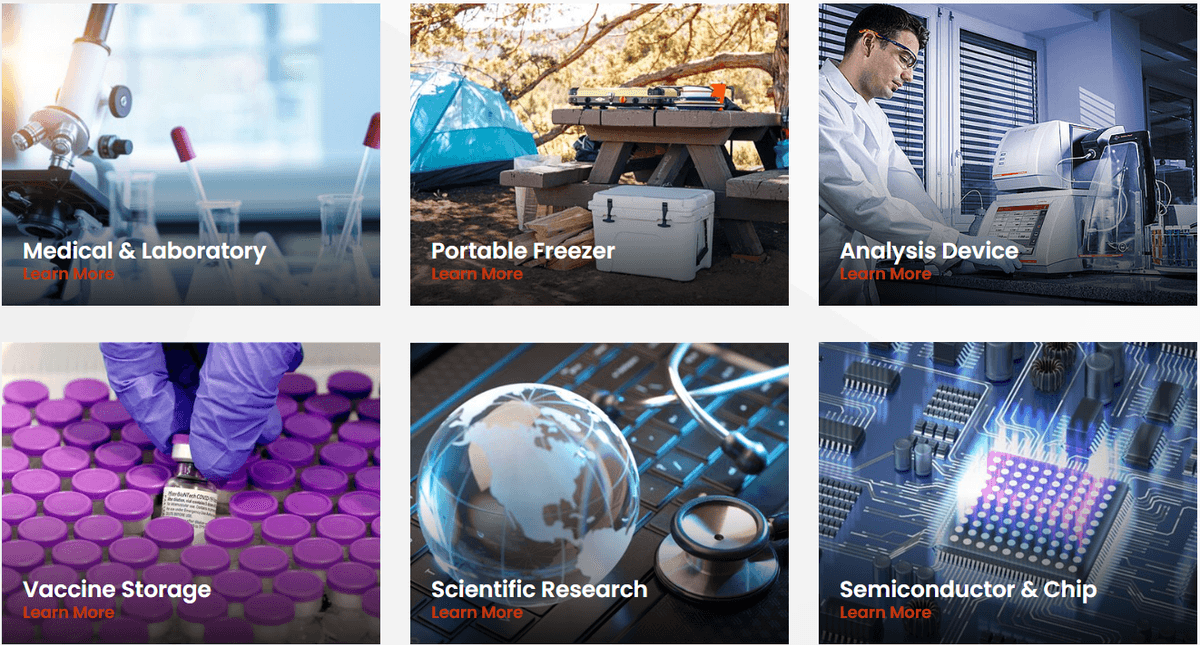
Project Overview: Analysis Device Sample Cooling
Cooling Approach: Free Piston Stirling Cooler
Client Demand: A scientific lab in Australia is developing a new analysis machine to measure tritium levels in groundwater samples. They're interested in integrating RIGID’s Stirling coolers, specifically designed with KF flanges, into their setup. These coolers will be attached to their water vapor trap apparatus, which removes water vapor from gas samples passing through a cold chamber at low pressure.
Recommended Product: Stirling Cryocooler RS100-PLUS
Background
An Australian scientific lab is currently developing an advanced machine to measure tritium levels in groundwater samples. To ensure accurate readings, they’ve chosen to incorporate RIGID’s Stirling Cryocoolers, particularly the RS100-PLUS model, into their design. These coolers are critical for achieving the low temperatures required in scientific measurements, making them a key component in their tritium analysis process.

Stirling Cryocooler Specification
Product: 100W PLUS STIRLING CRYOCOOLER
Model: RS100 Plus
(Included KF50 vacuum flange)
Input power: 24V DC
Cooling Power: 100W
Working current: 6A
Noise: ≤48dB
External Size: 167× 156 x 291mm (LxWxH)
Temp Range in Cold Fin (Cold part): -160℃~ 0℃
The primary function of the Stirling cooler in this context is cryogenic cooling. Tritium analysis often requires extremely low temperatures, which the RS100-PLUS model can achieve, reaching below -100°C. This capability is crucial for enhancing the sensitivity and accuracy of the lab’s analytical instruments.
Beyond tritium measurement, RIGID Stirling Cryocoolers are highly sought after for various scientific and industrial applications. Here are some examples of devices that benefit from Stirling Cryocoolers:
- HPLC Detectors: Ensure stable, low temperatures for enhanced detection sensitivity.
- GC-MS Systems: Cool components like mass spectrometers for precise chemical analysis.
- NMR Spectrometers: Maintain low temperatures for optimal performance in nuclear magnetic resonance experiments.
- Fluorescence Spectrometers: Improve sensitivity by enhancing signal-to-noise ratios.
- Cryopumps: Create and maintain vacuum environments for various scientific applications.
- Environmental Gas Analyzers: Maintain stable temperatures for accurate gas analysis.
- SEM and AFM Instruments: Reduce thermal noise and enhance imaging precision.
These examples highlight the versatility and reliability of Stirling Cryocoolers across numerous scientific disciplines.

Stirling Cryocoolers operate on the Stirling cycle, a thermodynamic process involving the compression and expansion of gas (usually helium) to achieve cooling. The cycle consists of compressing the gas, transferring heat away, expanding the gas, and then transferring heat back into it. This process allows the cooler to reach and maintain extremely low temperatures.
- High Cooling Efficiency: Ideal for cryogenic applications requiring ultra-low temperatures.
- Precise Temperature Control: Essential for experiments needing stable and specific temperature conditions.
- Low Vibration: Crucial for sensitive laboratory equipment where vibrations can affect results.
- Reliability: Known for long operational life and stable performance, making them perfect for continuous use in scientific settings.
How Does Stirling Cryocooler Work?
RIGID Stirling Cryocooler Series

RIGID’s Cryocooler, designed with just two moving parts, features a robust stainless steel housing that hermetically seals all sensitive components, making it cost-effective to maintain. The Stirling unit operates by continuously compressing and expanding gas adiabatically, using natural helium as a refrigerant. Helium, being a completely safe and environmentally friendly gas, adds an extra layer of safety to this efficient cooling system.

RIGID’s Stirling Cryocooler, particularly the RS100-PLUS model, is an indispensable component for laboratories requiring precise and efficient cryogenic cooling. Its ability to maintain ultra-low temperatures, combined with its reliability and compact design, makes it a preferred choice for various scientific applications. The Australian lab’s decision to use the RS100-PLUS in their tritium measurement machine underscores the cooler’s critical role in ensuring accurate and reliable scientific measurements.

